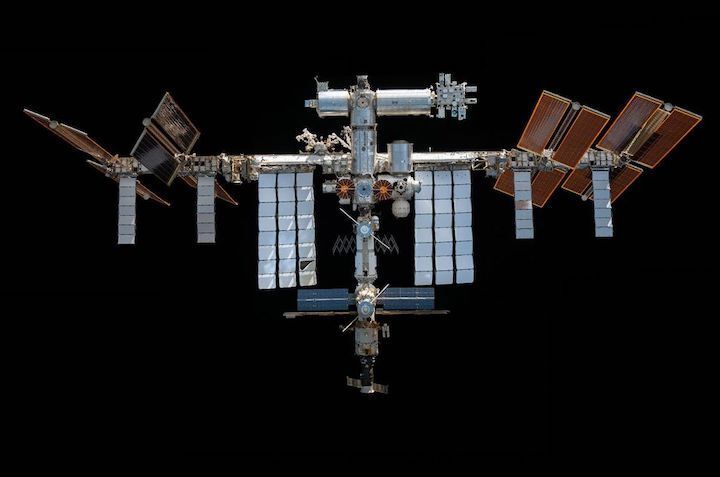28.06.2024
NASA has awarded SpaceX an $843 million contract to build the vehicle that will bring the International Space Station out of its longtime orbit of Earth when its operating lifespan ends in a few more years

WASHINGTON -- NASA has awarded SpaceX an $843 million contract to build the vehicle that will bring the International Space Station out of its longtime orbit of Earth when its operating lifespan ends in a few more years.
SpaceX, a privately held company controlled by technology mogul Elon Musk, will build the vehicle that will bring down the space station, but NASA will still oversee the eventual mission.
The International Space Station, launched in 1998, is expected to be needed to be brought out of orbit by 2030. The station is operated by space agencies from the U.S., Europe, Japan, Canada and Russia. All the countries involved have pledged to operate the station until 2030 except Russia, which has only committed to participate until 2028.
Crews of astronauts have been occupying the space station since 2000.
“The orbital laboratory remains a blueprint for science, exploration, and partnerships in space for the benefit of all,” said Ken Bowersox, NASA's associate administrator for space operations mission directorate.
The contract is another vote of confidence in the technological prowess of SpaceX, a rocket maker based in Hawthorne, California, that Musk founded in 2002 to explore new frontiers in space. Musk, 52, then became the driving force behind in Tesla, the electric car maker that accounts for most of his estimated fortune of $220 billion.
Quelle: abcNews
+++
NASA Selects International Space Station US Deorbit Vehicle
NASA is fostering continued scientific, educational, and technological developments in low Earth orbit to benefit humanity, while also supporting deep space exploration at the Moon and Mars. As the agency transitions to commercially owned space destinations closer to home, it is crucial to prepare for the safe and responsible deorbit of the International Space Station in a controlled manner after the end of its operational life in 2030.
NASA announced SpaceX has been selected to develop and deliver the U.S. Deorbit Vehicle that will provide the capability to deorbit the space station and ensure avoidance of risk to populated areas.
“Selecting a U.S. Deorbit Vehicle for the International Space Station will help NASA and its international partners ensure a safe and responsible transition in low Earth orbit at the end of station operations. This decision also supports NASA’s plans for future commercial destinations and allows for the continued use of space near Earth,” said Ken Bowersox, associate administrator for Space Operations Mission Directorate at NASA Headquarters in Washington. “The orbital laboratory remains a blueprint for science, exploration, and partnerships in space for the benefit of all.”
While the company will develop the deorbit spacecraft, NASA will take ownership after development and operate it throughout its mission. Along with the space station, it is expected to destructively breakup as part of the re-entry process.
Since 1998, five space agencies, CSA (Canadian Space Agency), ESA (European Space Agency), JAXA (Japan Aerospace Exploration Agency), NASA (National Aeronautics and Space Administration), and State Space Corporation Roscosmos, have operated the International Space Station with each agency responsible for managing and controlling the hardware it provides. The station was designed to be interdependent and relies on contributions from across the partnership to function. The United States, Japan, Canada, and the participating countries of ESA have committed to operating the station through 2030. Russia has committed to continued station operations through at least 2028. The safe deorbit of the International Space Station is the responsibility of all five space agencies.
The single-award contract has a total potential value of $843 million. The launch service for the U.S. Deorbit Vehicle will be a future procurement.
In its 24th year of continuously crewed operations, the space station is a unique scientific platform where crew members conduct experiments across multiple disciplines of research, including Earth and space science, biology, human physiology, physical sciences, and technology demonstrations not possible on Earth. Crews living aboard station are the hands of thousands of researchers on the ground having conducted more than 3,300 experiments in microgravity. Station is the cornerstone of space commerce, from commercial crew and cargo partnerships to commercial research and national lab research, and lessons learned aboard International Space Station are helping to pass the torch to future commercial stations.
Quelle: NASA
